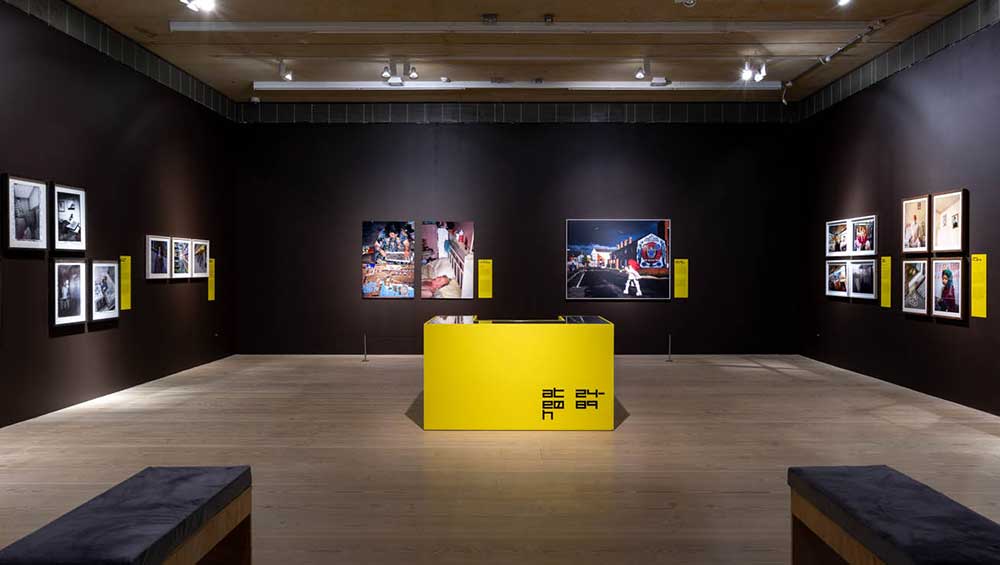
Installation view, After The End of History. Photo: Anna Lukala, courtesy the Artist, Focal Point Gallery and Hayward Gallery Touring.
Focal Point Gallery, Southend-on-Sea
3 July – 14 September 2024
by TOM DENMAN
The first of the two rooms comprising After the End of History: British Working-Class Photography 1989-2024, an exhibition curated by Johny Pitts, includes a portable cassette player emitting music recorded in the 90s from SCR, a Sheffield-based pirate radio station. We are told this is a curatorial attempt to “soften the gallery space”. One way it does this is by loosening the body and creating a state of immersion that reduces critical – and potentially, for some viewers, social – distance. The tinny, transgressive sound pertains most directly to Eddie Otchere’s contemporaneous photographs of jungle raves, in some of which trails of light – captured by the lens or burned in the darkroom, it is hard to tell – envelop us in the trippy atmosphere of the club. In Goldie – Metalheadz (Blue Note Sessions), Blue Note, Hoxton Square (1996), the pioneering jungle DJ manically reaches out, his palm lit by the flash as if he were grabbing the sun; he is hero and everyman, or hero and anyone else in the club at that time, and we are taken there.
As such, at the moment we enter this show – even after reading the introductory text outside the door – we lose sight of the overarching premise. This is a strength, however, and not a weakness. The title is decidedly macroscopic. Aside from its timeframe and demographic remit, it refers to Francis Fukuyama’s controversial book The End of History and the Last Man (1992), in which the political theorist argued that the fall of the Berlin wall marked an end point in political evolution, ushering in the ascendency of western liberal democracy. Yet here we are taken into worlds that do not share the privileged vantage point from which such historical and demographic generalisations can be made. We are encouraged to engage with the images in a way that is more empathetic than scientific, as exemplified by the inclusion, in the wall text, of Pitts’ personal commentary responding to each artist.
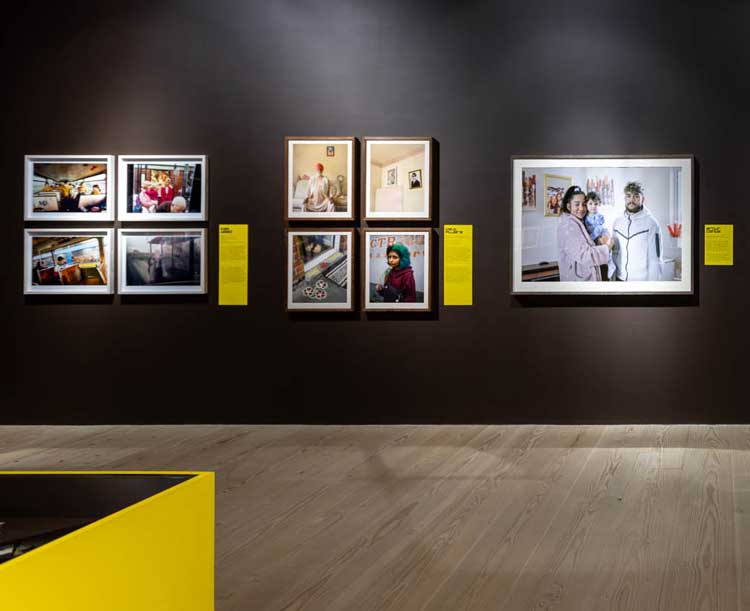
Installation view, After The End of History. Photo: Anna Lukala, courtesy the Artist, Focal Point Gallery and Hayward Gallery Touring.
That music is a recurring subject is understandable given its capacity to foster solidarity in the face of economic hardship. Ewen Spencer presents the dancefloors of the Cypriot resort town of Ayia Napa at the turn of the millennium with none of the snobbery the place usually gets in the media, thus allowing the sex and euphoria of the rave – and of youth – to have meaning. Elaine Constantine’s photographs of the northern soul scene in the mid-90s empathetically attend to the artistry of individuals in the heat of a dance, which alone can signify cohesion, as it does for Pitts, who reveals that his father was an African American member of a northern soul band. Music is also socially ambiguous, especially when it becomes popular beyond the subculture from whence it originated – a few years after Otchere was photographing jungle raves in London, I was sneaking out of my private boarding school to attend them. Music thus represents a curious, imperfect crossroad; it feels familiar but is by no means universal. Jungle could not have meant the same thing to my teenage self as it did to the people in Otchere’s photographs, and yet it was – and in these images remains – a point of contact.
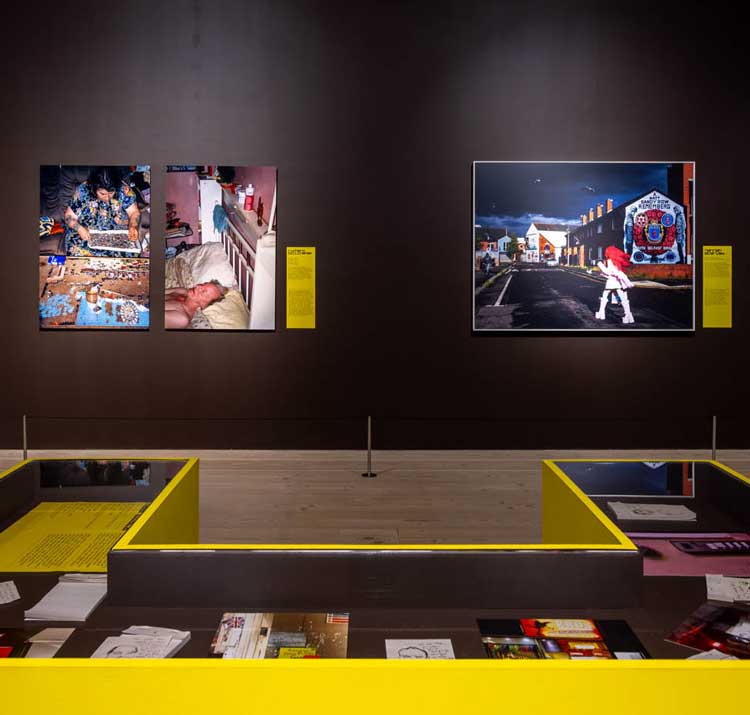
Installation view, After The End of History. Photo: Anna Lukala, courtesy the Artist, Focal Point Gallery and Hayward Gallery Touring.
Along with Spencer’s photographs of Ayia Napa, other images, being displayed in an art gallery – albeit a community-minded, public one that is free to enter – have the effect of calling out middle-class assumptions of good taste. This is especially the case in three identical prints of Trevor Smith’s World Boxing Champion Prince Naseem Hamed pictured in 1994 (1994). The British-Yemeni boxer poses in semi-profile, topless, in gold-rimmed sunglasses, a gold necklace, red-verging-on-hot-pink boxing gloves, and his signature leopard-print shorts – all against a graded sky-blue backdrop. I am reminded of the comedian Sacha Baron Cohen’s fictional character Ali G, a stereotype of a multi-ethnic, working-class man that reflected and fed into middle-class, snobbish – and racist – hegemonies of taste and comportment, who first appeared on British television in 1998. Smith’s photographs of Hamed immerse us in a space in which the boxer might be celebrated, not only as an athlete but as a person of style.
Less upbeat are the images that bring out the poverty and lack of social mobility that are persistent issues for the underprivileged. Sometimes the narrative is poignant, as in Tom Wood’s photographs of people on buses and at bus stops in Merseyside in the 1990s. In Lime Street, Liverpool (1995), a boy looks glumly out of a bus window at what could be his future: the window of another bus, in which an old man, with the same expression, looks back. The double meaning of the words “BUS STOP” in the anti-smoking advertisement (with a no smoking sign inscribed in the letter “O”), now additionally signifies social stagnation. Graffiti on the back of a bus seat in Towards Huyton (1992) seems to be advertising a rave, the image thus showing the impoverished flipside from which the music in the other images – and that I am hearing – can be a means of escape. Escape, or its fantasy, and the possibility that it provides of an outsider’s perspective on an overfamiliar environment, is the theme of Hannah Starkey’s Untitled, May 2022 (2022). The cinematically staged image presents a street in Belfast, muralled to commemorate The Troubles. A young woman arrives, lit from behind – as if she were coming from a brighter place – and kitted out in pink Harajuku streetwear.
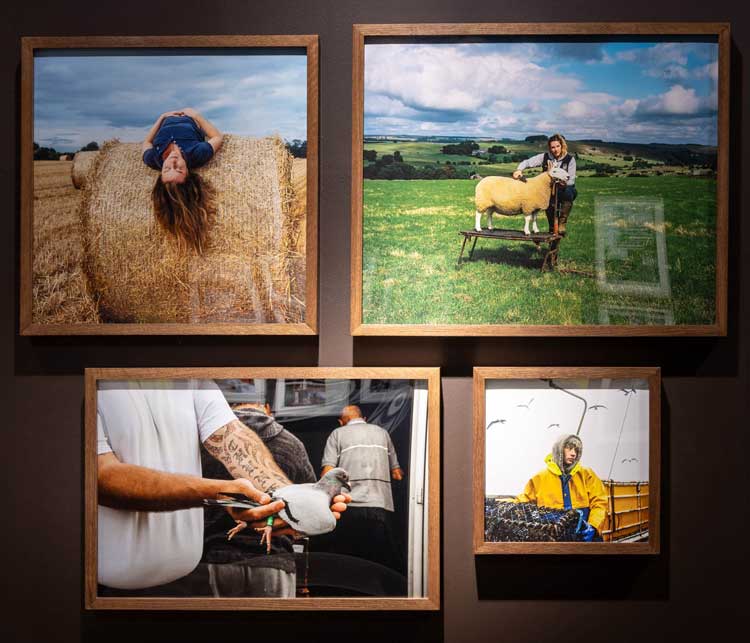
Works by Joanna Coates, installation view, After The End of History. Photo: Anna Lukala, courtesy the Artist, Focal Point Gallery and Hayward Gallery Touring.
Two series of photographs, one by Joanne Coates, the other by Richard Grassick, stand out for being of rural life. Coates’s Poppy, Scottish Borders, Daughters of the Soil (2020) shows a woman proudly posing with a sheep and shearers, while Annie Stones, Feed Representative, Farmer, Swaledale, Daughters of the Soil (2023) presents another woman at rest, laying on a haybale. Grassick’s work captures moments of love and laughter among families in County Durham in the 1990s. Proud integration of work, play and domestic life distinguishes these images from their urban counterparts; in the British countryside, the images in this show suggest, “working class” is less detached from its Marxist association with labour than it is in the city. There is a persistent sense of holding on, and as Grassick’s titles indicate, everything revolves around work. Breakfast in the Waltons’ Kitchen, 9am, After Feeding Sheep on the Snow-Covered Hillside. Westgate, Weardale (1993), for example, depicts a man ravenously eating porridge as his wife comes to join him, juxtaposed with a photograph (1993) of the couple feeding their sheep in the snow.
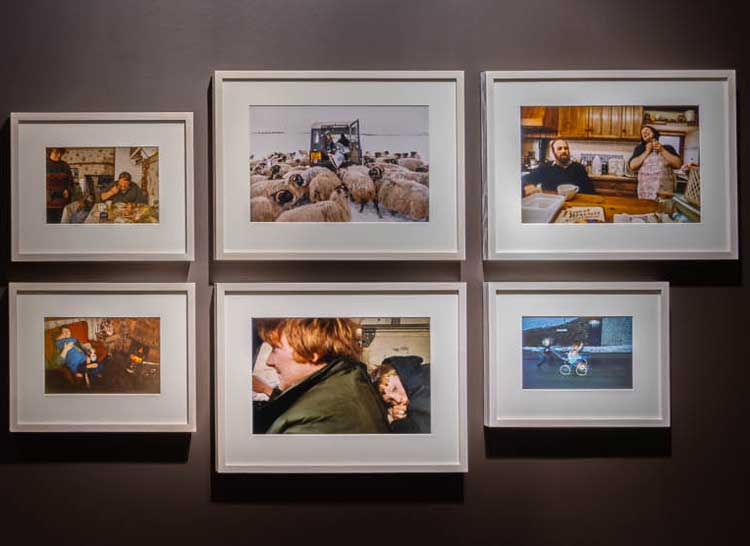
Works by Richard Grassick, installation view, After The End of History. Photo: Anna Lukala, courtesy the Artist, Focal Point Gallery and Hayward Gallery Touring.
An aspect of working-class life notably absent from this show, one that politics and the media have made notorious, is the world of the far right – whose hostility is in no small part economically driven, however toxic. This may be unsurprising given the potential difficulties of persuading a xenophobic artist to participate in an ethnically diverse exhibition dedicated to the working class’s representation of itself. More importantly, far-right populism’s resounding claim to represent the working class – a claim that has promulgated the myth that the working class is exclusively white and xenophobic, a negative association which, in turn, fuels the dominance of the “soft left” in the Labour party, itself a consequence of the demise of socialism after 1989 – makes it a priority to represent the working class’s many other sides. And in light of the show’s title, one is inclined to hope that this isn’t the end, that more work can and will be done.